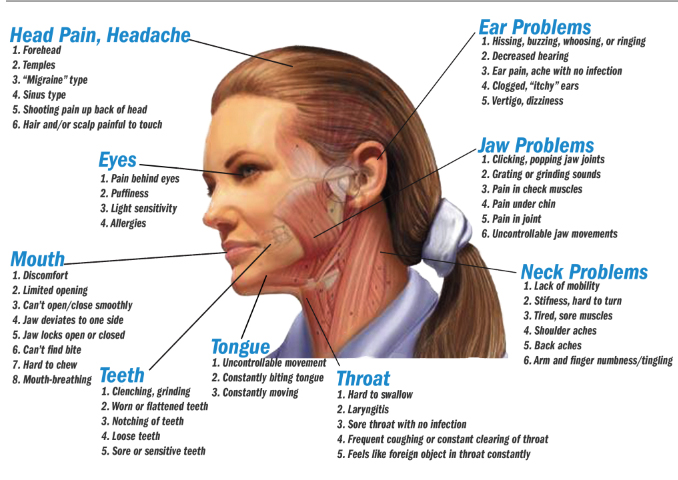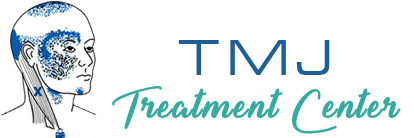The following information is FYI only: It is not intended to provide treatment or recommend treatment by any means or methods. Any health problems need careful diagnosis by your attending doctors.
TMJ Terminology
The term “treatment” is related to cure, relief, therapy, recovery and solution. Some of the treatments are referred to as alternative, natural, noninvasive, nonsurgical and physical therapy.
Treatment may involve exercise, relaxation, meditation, massage, moist heat, diet, nutrition, supplements.
Some TMJ treatments involve products, devices, protheses, appliances, braces, night mouth guards.
The person involved in treatment is often a Doctor, Dentist, Otolaryngologist. Other specialists and health care experts may be involved.
A patient may seek treatment in a center, clinic, office, institute or other health organization.
The patient should consult their insurance to see what costs are covered. Not all insurance network doctors treat TMJ problems.
Current literature contains a wide array of confusing definitions for terms such as CFP, CFD, MFP, MPD, CMD, CMP, CMDS, TMD, TMJ, TMJD, OFD, OFP, MMD, AFP and many others. Terms used depends on who is using the term. Each term means something to someone but means something totally different to others.
TMJ problems can be categorized into several groups.
Group I describes problems of the TM joint. Examples are as follows:
TMJD, Temporomandibular Joint Dysfunction/Disorder is a functional problem of the mandible specifically related to the temporal area and the TM joint. Putting it differently,
T represents occlusion, M represents muscle, J represents joints, and D represents dysfunctions.
This is the same as TMD as defined by NIDCR.
TMJP, Temporomandibular Joint Pain is a description of pain in the TM joint area.
TMJ, Temporomandibular Joint is an anatomical term only. It should never be used to describe a disease, dysfunctional problem, pain, and or syndrome. TM joint problems can be diagnosed by tomography, MRI, and arthrography.
Group II is for all the terms related to muscles. Within this group are two subgroups.
All muscle problems are diagnosed with muscle palpations, ROM measurements, and nerve testing.
Subgroup One describes the dysfunction problems involving mostly the jaw muscles.
All terms ending with a D can be put into this group, which includes CFD, MPD, CMD,
OFD, MMD.
CFD, Craniofacial dysfunction describes the dysfunction between the systems related to the face and head. The cranium does not have an easily measurable range of motion, so any measurable dysfunction is in the mandibular range of motion. These functional problems are related to facial structure and how the teeth fit together, how the muscles function and how the joint functions.
MPD, Myofascial pain dysfunction describes a functional problem of the mandible with pain. This functional problem is related to disturbed occlusal mechanics, and mostly muscular in origin (Dr. J. Travell).
CMD, Craniomandibular Disorder describes the functional problem of the mandible. This functional problem relates to how the teeth fit together, how the muscles function and how the joint functions.
CMDS, Cranio-mandibular Dysfunction Syndrome describes a collage of symptoms indicating abnormal conditions, both disease and psychological disorders. The known cause has not yet been discovered.
TMD, Temporomandibular Dysfunction describes the dysfunction between the systems related to the temporal region of the head and lower jaw. NIDCR defined TMD as a group of conditions affecting the jaw joints and the muscles that control the jaw.
MMD, Masticatory muscle disorder as defined by Dr. J. Okeson include muscle splinting, local muscle soreness, trigger point pain, myospasm, and centrally mediated myalgia.
Subgroup Two describes pain, which can result from muscular dysfunction. All the terms ending with P can be included in this group, which includes MFP, CMP, AFP and OFP.
MFP Myofascial Pain is pain in the fascial system of the body and involves muscles. Fascia is the connective tissue found everywhere in your body that holds all of your organs in place. When fascia malfunctions due to injury, illness, surgery or poor posture, it becomes tight and binds down, resulting in abnormal pressure on nerves, muscles, bones or organs of the body.
Restriction in one region can put a “drag” on the fascia in any other direction. In TMJ disorders, professionals tend to look primarily at the muscles of the upper body and head. While this is the main site of pain, the rest of the body should not be overlooked. Myofascial pain occurs throughout the body and affects how healing takes place.
CMP, Chronic Myofascial Pain is myofascial pain in fascia and muscles of the head, neck, all the way to the toes.
OFP, Orofacial Pain is pain in teeth and face including facial muscles.
AFP, Atypical Facial Pain is the pain occurring in the territory of the trigeminal nerve with no specific cause (Dr. James H. Halsey, University of Alabama Medical Center).

